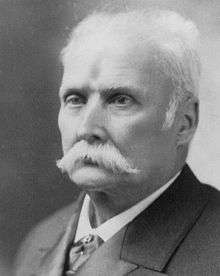A Message to Garcia
| Author | Elbert Hubbard |
|---|---|
| Country | United States |
| Language | English |
| Genre | Literature |
Publication date | 1899 |
| Media type | Print (Hardcover, Paperback, E-Book) |
| Pages | 42 |
| ISBN | 978-1-61720-215-5 |
A Message to Garcia is a best-selling inspirational essay by Elbert Hubbard, published in 1899. It has been made into two motion pictures. The essay bemoans the difficulty of finding employees who obey instructions without needless questions, work diligently without supervision, take initiative to overcome obstacles, and complete assignments promptly. It bewails the number of incompetent, lazy, thoughtless, obstructionist, employees who impede the work of the good employees, while admitting that these benighted people may not be able to help themselves.[1]
Publication history
A Message to Garcia was originally published as a filler without a title in the March 1899 issue of the magazine The Philistine which Elbert Hubbard edited. It was quickly reprinted as a promotional pamphlet for the New York Railroad, then as a book. It was very popular (especially amongst employers), and more than 40 million copies have been printed,[1] in 37 languages. It also became a well-known allusion of American popular and business culture until the middle of the 20th century. According to language expert Charles Earle Funk, "to take a message to Garcia" was for years a popular American slang expression for taking initiative and is still used by some members of the military.
Historical context

With tension increasing between the United States and Spain (which then ruled Cuba), President William McKinley desired to initiate communication with the Cuban rebels, who could prove a valuable ally in case of war with Spain. McKinley asked Colonel Arthur L. Wagner to suggest an officer to seek Calixto García, one of three top commanders of the rebels. Wagner suggested Andrew Rowan, a lieutenant, who then traveled to Cuba via Jamaica, dressed as a traveling sportsman. Rowan was met by rebel cavalry, and taken to meet Gen. García in the Oriente Mountains. Gen. García, eager for the Americans' help in fighting the Spanish, sent five knowledgeable men with Rowan to the US, rather than merely send garnered information. Lt. Rowan's party returned after 4 days British quarantine in the Bahamas, to aid Army intel. He was later given command of a Company of "Immunes"—African-American troops presumed to be immune to the tropical diseases found in Cuba. Only in 1922 did the then-retired Col. Rowan finally receive the Distinguished Service Cross.[2]
Other media
A Message to Garcia was first made into a motion picture during 1916 by Thomas A. Edison, Inc. The silent movie was directed by Richard Ridgely and featured Robert Conness, Mabel Trunnelle, and Charles Sutton as Garcia. In 1936, A Message to Garcia was made by Twentieth Century Fox and directed by George Marshall, featuring Wallace Beery, Barbara Stanwyck, John Boles, Alan Hale, Herbert Mundin, Mona Barrie, and Enrique Acosta as Garcia.[3]
The radio program Suspense broadcast a 30-minute adaptation with the same title on September 14, 1953. It featured Richard Widmark as Rowan.
The Seattle-based band Visqueen released an album during 2009 titled "Message to Garcia".
References
- 1 2 Elbert Hubbard's "A Message to Garcia"
- ↑ Andrew Summers Rowan Arlington National Cemetery Website
- ↑ A Message to Garcia (1936)
External links
| Look up carry the message to Garcia in Wiktionary, the free dictionary. |
| Wikisource has original text related to this article: |
- How I Carried the Message to Garcia by Andrew Summers Rowan.
- With Elbert Hubbard's theme in mind, A Message to Garcia by Otto Oldenburg.
- Un Message à Garcia : a french translation.
- 1916 silent film: A Message to Garcia at the Internet Movie Database
- 1936 "talkie" film: A Message to Garcia at the Internet Movie Database